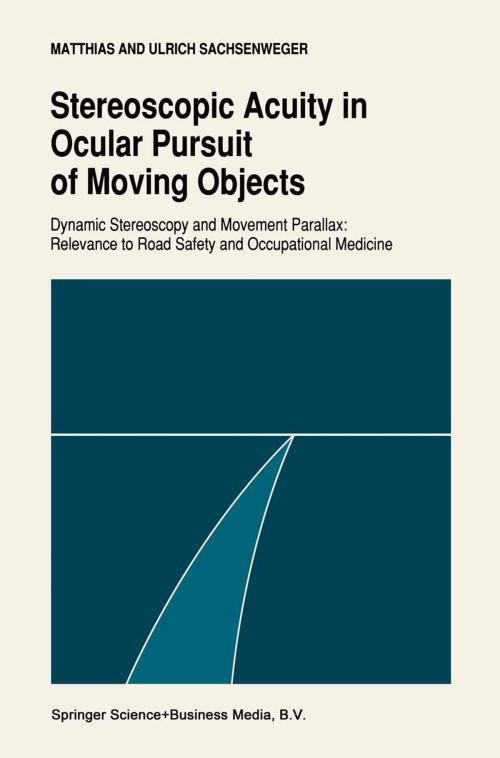Stereoscopic acuity in ocular pursuit of moving objects
Dynamic stereoscopy and movement parallax: relevance to road safety and occupational medicine
Nonfiction, Health & Well Being, Medical, Specialties, Occupational & Industrial Medicine, Ophthalmology| Author: | Matthias Sachsenweger, Ulrich Sachsenweger | ISBN: | 9789401125727 |
| Publisher: | Springer Netherlands | Publication: | December 6, 2012 |
| Imprint: | Springer | Language: | English |
| Author: | Matthias Sachsenweger, Ulrich Sachsenweger |
| ISBN: | 9789401125727 |
| Publisher: | Springer Netherlands |
| Publication: | December 6, 2012 |
| Imprint: | Springer |
| Language: | English |
There has been growing acceptance of the insight that the methods so far used in the testing of visual functions have been inadequate when it comes to specific problems and should, therefore, be supplemented with more specialised methods for dynamic testing. As long as two decades ago, large-scale mass screening produced evidence to the effect that visual acuity, so far exclusively determined by means of still samples, was not identical with visual acuity in the ocular pursuit of moving targets (dynamic visual acuity). In other words, vision testing can, at present, provide little informa tion on an individual's capability of identification, appreciation, and judge ment of mobile objects. Spatial, three-dimensional perception of moving targets, hereafter re ferred to as dynamic stereoacuity, is the particular subject on which findings are reported in this article. Findings of that kind are of considerable relevance to everyday life, since many of the phenomena that have to be three-dimensionally perceived in private life and in occupational practice, are in movement. So far, dynamic stereoacuity has never been systematical ly studied and is still a blank space on the maps of ophthalmology and physiology. This is equally true for dynamic stereoscopy in binocular vision as well as for perception on the basis of movement parallax, a phenomenon of differentiated contour displacement within a given field of vision which is also available to the monocular individual under conditions of head or body or object movement within the visual space.
There has been growing acceptance of the insight that the methods so far used in the testing of visual functions have been inadequate when it comes to specific problems and should, therefore, be supplemented with more specialised methods for dynamic testing. As long as two decades ago, large-scale mass screening produced evidence to the effect that visual acuity, so far exclusively determined by means of still samples, was not identical with visual acuity in the ocular pursuit of moving targets (dynamic visual acuity). In other words, vision testing can, at present, provide little informa tion on an individual's capability of identification, appreciation, and judge ment of mobile objects. Spatial, three-dimensional perception of moving targets, hereafter re ferred to as dynamic stereoacuity, is the particular subject on which findings are reported in this article. Findings of that kind are of considerable relevance to everyday life, since many of the phenomena that have to be three-dimensionally perceived in private life and in occupational practice, are in movement. So far, dynamic stereoacuity has never been systematical ly studied and is still a blank space on the maps of ophthalmology and physiology. This is equally true for dynamic stereoscopy in binocular vision as well as for perception on the basis of movement parallax, a phenomenon of differentiated contour displacement within a given field of vision which is also available to the monocular individual under conditions of head or body or object movement within the visual space.















